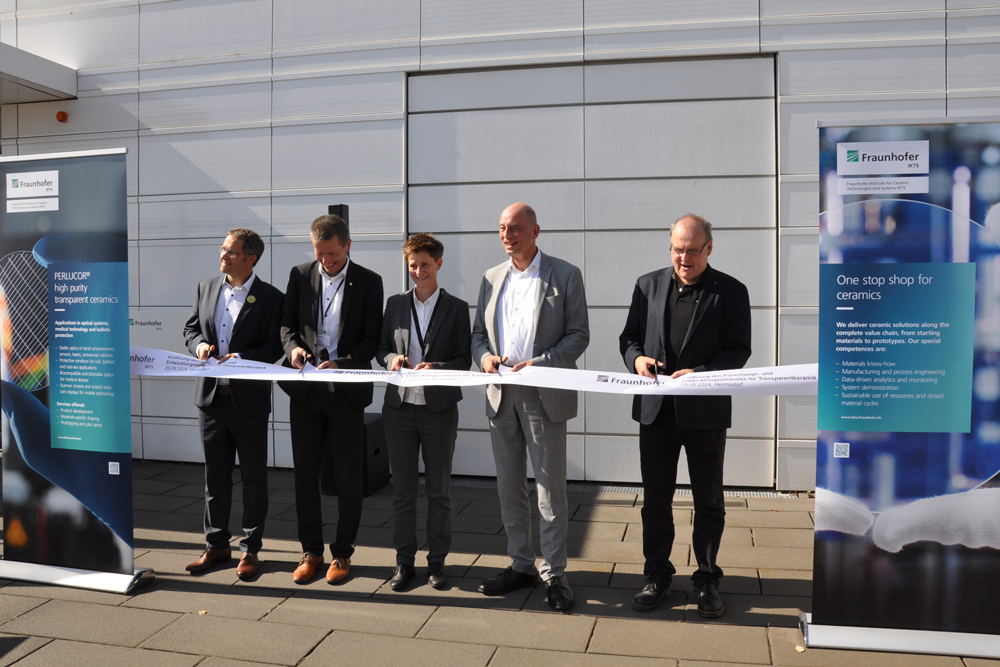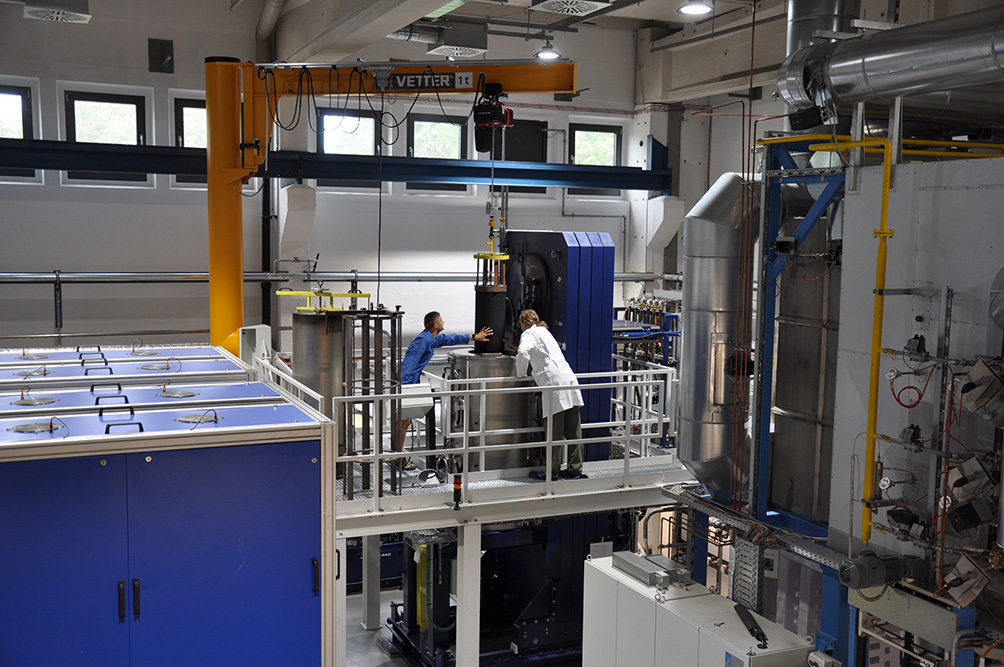Fraunhofer IKTS opens Europe’s first R&D center for transparent ceramics in Hermsdorf, Thuringia
See-through like glass, but heat-resistant and scratch-proof like ceramics – transparent ceramics are unique materials and their manufacturing requires not only special know-how, but also specialized equipment and systems. In future, transparent ceramics will be able to make even greater use of their advantages over glass and sapphire in terms of robustness, hardness, transmission and cost effectiveness. The reason: The Fraunhofer Institute for Ceramic Technologies and Systems IKTS has opened a new research and development center for transparent ceramics at its Hermsdorf site on August 29, 2024 in the presence of Thuringia's Minister of Economics and Science, Wolfgang Tiefensee. The institute aims to develop a variety of innovative, economical applications with interested industrial partners.



Novelty: Manufacturing transparent ceramic components on a pilot scale
The research and development center for transparent ceramics is unique in Europe. “We now have an infrastructure of the entire process chain for the production of transparent ceramic components, not only in the laboratory, but also on a pilot and series scale. This allows us to greatly expand our expertise and the range of applications for transparent ceramics,” says Dr. Sabine Begand, Head of the Oxide Ceramics department. This leap in expertise is now possible because IKTS has taken over the transparent ceramics division and the PERLUCOR® brand from CeramTec-ETEC. Around 20 manufacturing systems and 100 small devices with a production area of 700 m² have since been integrated into the institute's infrastructure at the Hermsdorf site. The Free State of Thuringia funded this initiative with 2.5 million euros. Industries that can benefit greatly from transparent ceramics include optics, opto-electronics, civil defense, security technology, medical technology, laser and sensor technology, scanner and display technology, the automotive and aerospace industries and mechanical engineering.
From powder preparation to shaping, design and analysis – new equipment covers the entire process chain
The new infrastructure includes equipment and systems for conditioning high-purity powders, shaping, heat treatment, laser and ultra-precision processing. “The most important tasks we have set ourselves,” emphasizes Dr. Martin Drüe, Group Head of Transparent Ceramics at Fraunhofer IKTS, ”are, on the one hand, to produce transparent ceramics in excellent quality on a pilot and series scale. Purity and high transparency play a decisive role here. On the other hand, we are looking forward to exciting, cutting-edge development work together with industrial partners. This will not only involve material analysis and development, design or shaping of the ceramics, but also application-specific issues relating to system integration. This is because it often concerns applications that require transparent ceramics in combination with other materials such as glass, titanium or precious metals.” Industrial partners can use the technical infrastructure of the R&D center as a service, conduct trials and benefit from the results of mechanical tests, laminating and printing tests, for example. Prototypes and pilot series with quantities of approximately 10,000 units as well as an almost fourfold increase in component size will now be possible. The joining of transparent ceramics is also a focus of development in order to further increase the variety of geometries. The IKTS researchers have also set themselves the goal of steadily increasing the reproducibility of component production.
Transparent ceramics boast impressive hardness and transmission – high potential for competitive advantages in a wide range of applications
Transparent ceramics have outstanding mechanical and optical properties: The material is four times harder than glass and has significantly better transmission of light, both in the infrared and UV range. The material is also characterized by high scratch and temperature resistance as well as thermal conductivity. Due to its high hardness, the material is ideal for ballistic protection applications – for example, in combination with substrates such as glass or plastic, the component can be made significantly thinner with the same protective effect, which reduces material and thus weight. Transparent ceramics also offer advantages in areas such as autonomous driving, driver assistance, transportation, aviation and laser head protection systems. In addition to the excellent transmission and mechanical properties, the chemical stability and biological compatibility of transparent ceramics are ideal for applications in medical technology, such as microimplants. Interactive screens like head-up displays must also be robust and yet lightweight. This is required above all by manufacturers of mobile devices and other high-end applications, for which transparent ceramics are ideally suited.
Interested in learning more about the enormous advantages of transparent ceramics? Meet the IKTS experts at W3+Fair, September 25–26, 2024 in Jena, booth F5b, as well as at SPIE.Photonics West from January 25–30, 2025 in San Francisco in the German Pavilion.